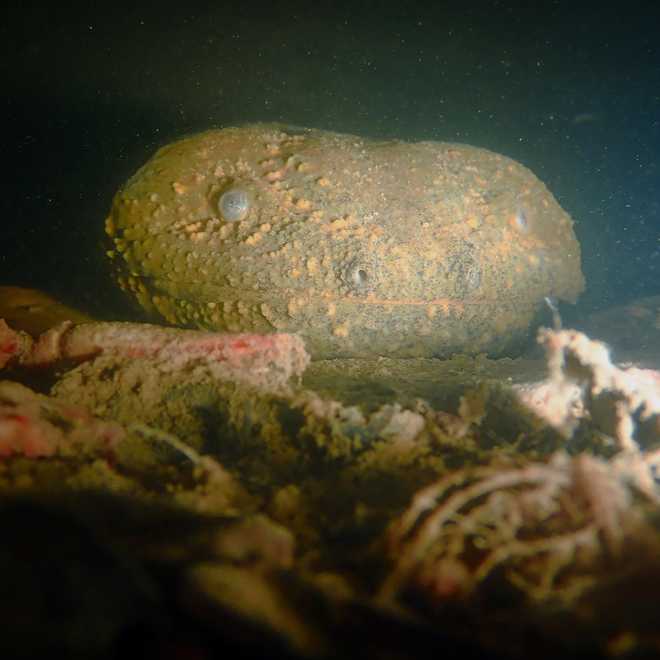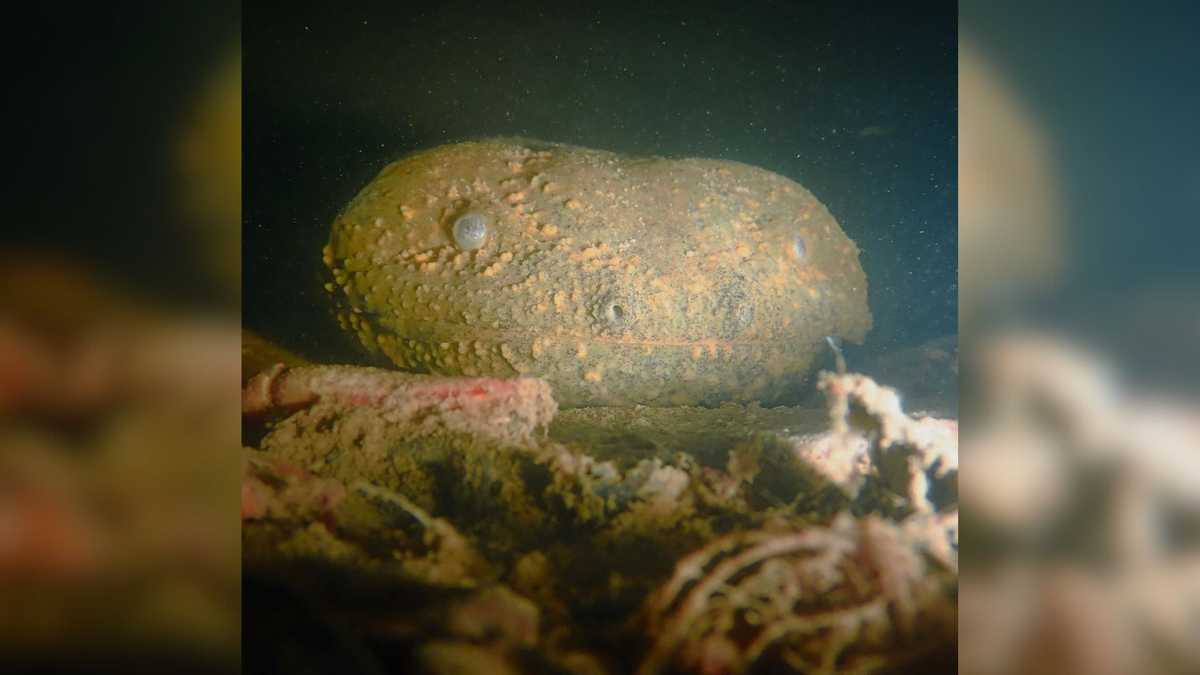A rare giant salamander called an eastern hellbender was spotted recently in Kentucky.The Kentucky Department of Fish and Wildlife Services posted a photo of the hellbender taken by one of their biologists in an eastern Kentucky stream.The department said the salamanders are rarely seen in the wild and that their numbers are declining, with a limited range in Kentucky.Hellbenders spend most of their lives hidden beneath large, flat rocks in cool, clean, fast-flowing streams, making them difficult for biologists to spot and survey. They can grow up to a length of 12 to 29 inches, making them the fourth-largest aquatic salamander species in the world.It isn’t known for sure where it got its name, but the Missouri Department of Conservation says it probably comes from its odd look.”One theory claims the hellbender was named by settlers who thought ‘it was a creature from hell where it’s bent on returning.’ Another rendition says the undulating skin of a hellbender reminded observers of ‘horrible tortures of the infernal regions,'” says the Missouri Department of Conservation. In reality, it’s a harmless aquatic salamander. The department said hellbenders are often called the “canary in the coal mine”️ for the health of a stream. Because they require clean water and a stable habitat, their presence can signal a healthy ecosystem, and their decline can be an early warning sign of environmental problems. The department says people can support the conservation of hellbenders and other vulnerable Kentucky wildlife by becoming a member of Kentucky Wild. You can find out more about joining here.
A rare giant salamander called an eastern hellbender was spotted recently in Kentucky.
The Kentucky Department of Fish and Wildlife Services posted a photo of the hellbender taken by one of their biologists in an eastern Kentucky stream.

Kentucky Department of Fish and Wildlife
The department said the salamanders are rarely seen in the wild and that their numbers are declining, with a limited range in Kentucky.
Hellbenders spend most of their lives hidden beneath large, flat rocks in cool, clean, fast-flowing streams, making them difficult for biologists to spot and survey.
They can grow up to a length of 12 to 29 inches, making them the fourth-largest aquatic salamander species in the world.
It isn’t known for sure where it got its name, but the Missouri Department of Conservation says it probably comes from its odd look.
“One theory claims the hellbender was named by settlers who thought ‘it was a creature from hell where it’s bent on returning.’ Another rendition says the undulating skin of a hellbender reminded observers of ‘horrible tortures of the infernal regions,'” says the Missouri Department of Conservation.
In reality, it’s a harmless aquatic salamander.
The department said hellbenders are often called the “canary in the coal mine”️ for the health of a stream.
Because they require clean water and a stable habitat, their presence can signal a healthy ecosystem, and their decline can be an early warning sign of environmental problems.
The department says people can support the conservation of hellbenders and other vulnerable Kentucky wildlife by becoming a member of Kentucky Wild.

